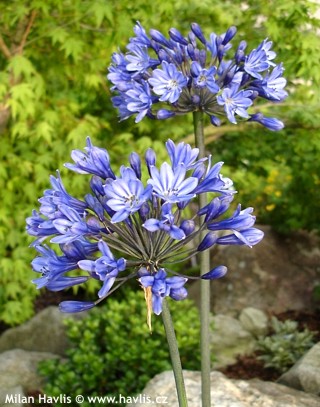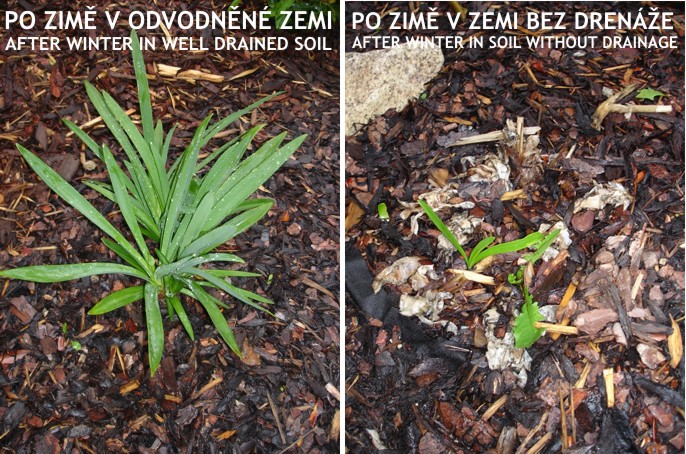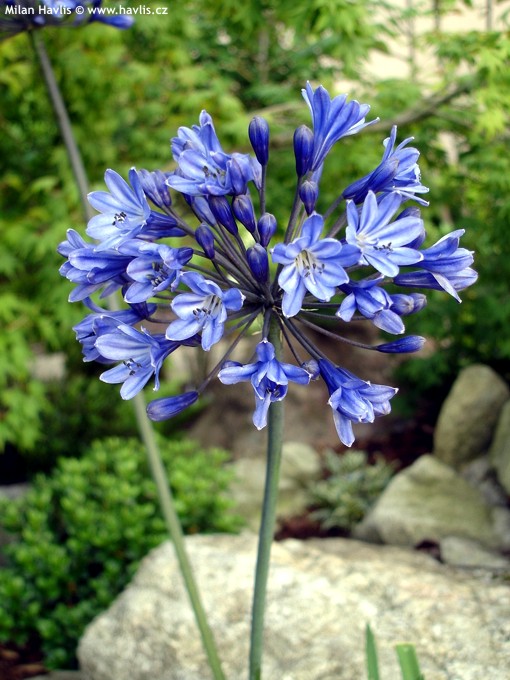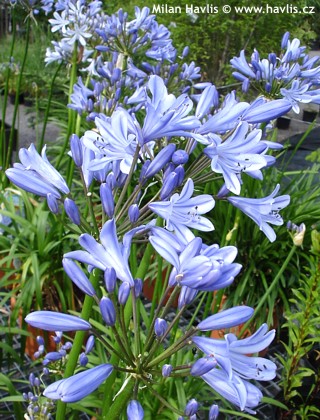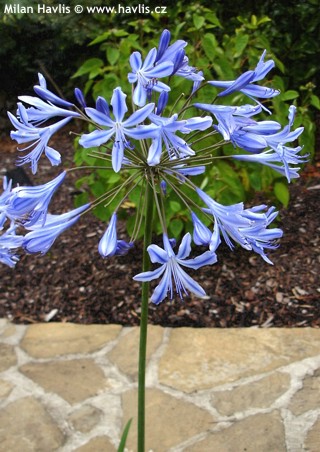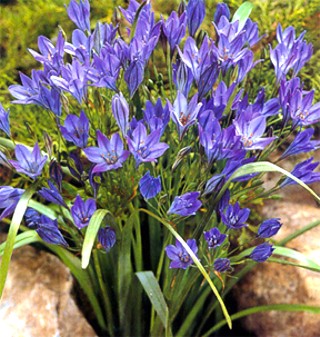Agapanthus 'BLACK BUDDHIST' African blue lily
size/type
low or groundcovering,low or groundcovering
usual height
0,5-0,6m
usual width
0,3-0,8m
leaves
deciduous broadleaf
colour of leaves
flowers
showy
colour of flowers
blooming time
July-August
location
full sun
USDA zone (lowest)
6b (down to -21°C)
winter protection
for zone 5+6

for zone 7

categorized
Agapanthus
African blue lily is one of the most attractive summer plants. This perennial is from southern Africa where less hardy species are grown. We are very lucky to have good breeders here in Europe. They made several hybrids most of which have not only nicer flowers but are hardier than the species and can grow and flower freely in climate zones where some people still think that magnolias cannot survive.Description of the plant:
Black Buddhist is another fantastic variety of African blue lily. It is a perennial which produces umbels of sky blue to deep blue funnel-shaped flowers. Its outstanding feature are deep blue, almost black stalks on which the flowers appear. The sturdy stems gain the same colour in the upper parts. Strap-like leaves are about 2-3 cm wide and mid green and remain evergreen until hard frost. Grow agapanthus in fertile, very well-drained soil. In too wet or boggy soil it will most certainly die. The plant benefits from regular watering and fertilizing from spring until end summer. Though, once established it withstands drought. In the Mediterranean it belongs to the top favourite summer blooming plants. I even saw them planted at motorways near Nice. Whether they were irrigated there or not does not matter so much as I noticed many more of them grown freely in gardens with no irrigation, just absorbing moisture from humid sea-coastal air.
African blue lily is surprisingly hardy enough in our climate (zone 6) if dry or perfectly drained soil is provided. Just top up at least 20 cm of bark mulch before winter and remove it in the spring. The plant may lose its leaves after severe winter but will make plenty of new ones.
Last update 23-06-2009
QUICK PRICE OVERVIEW
CURRENTLY SOLD OUT
WANT TO TRY A SIMILAR PLANT?












